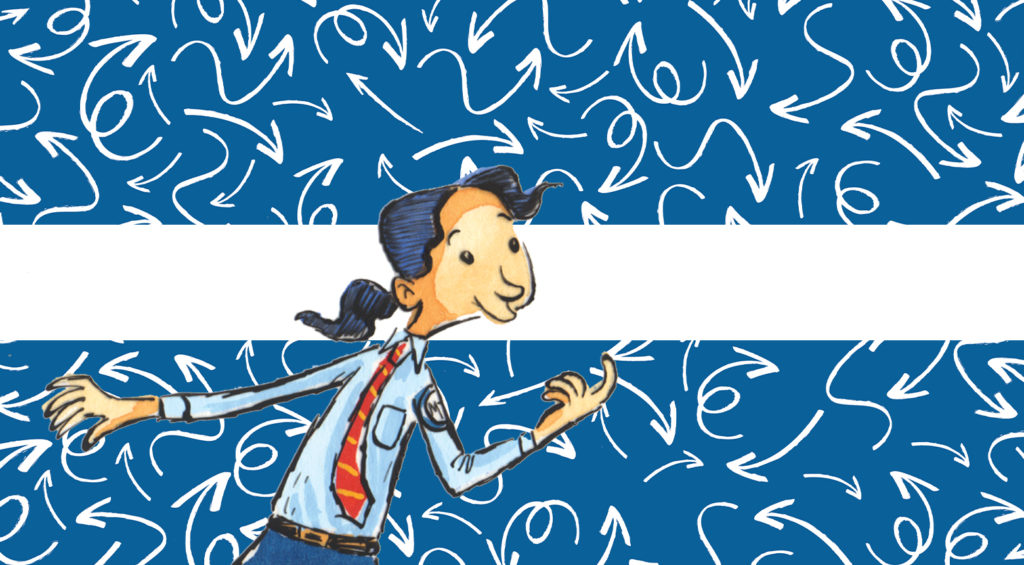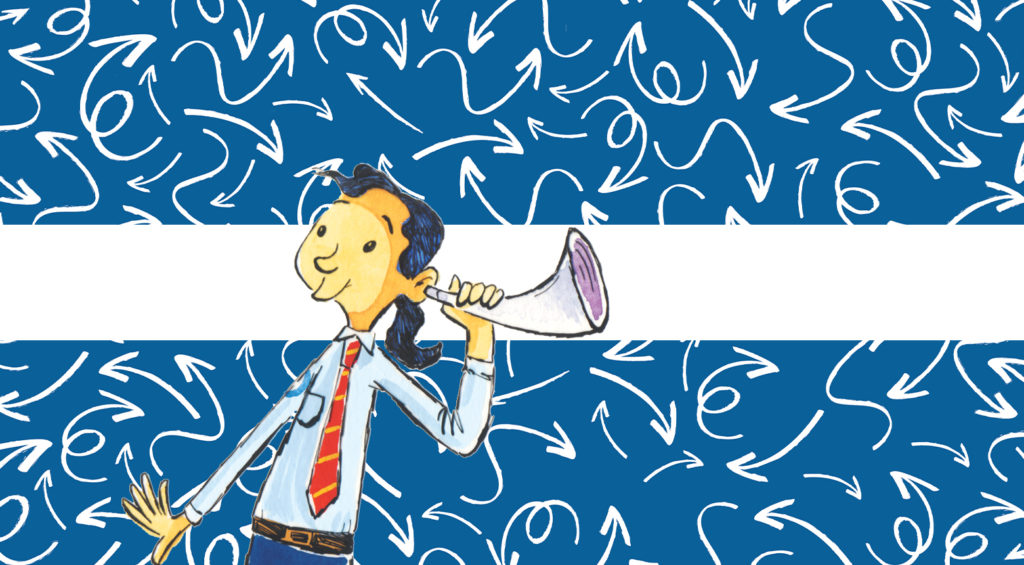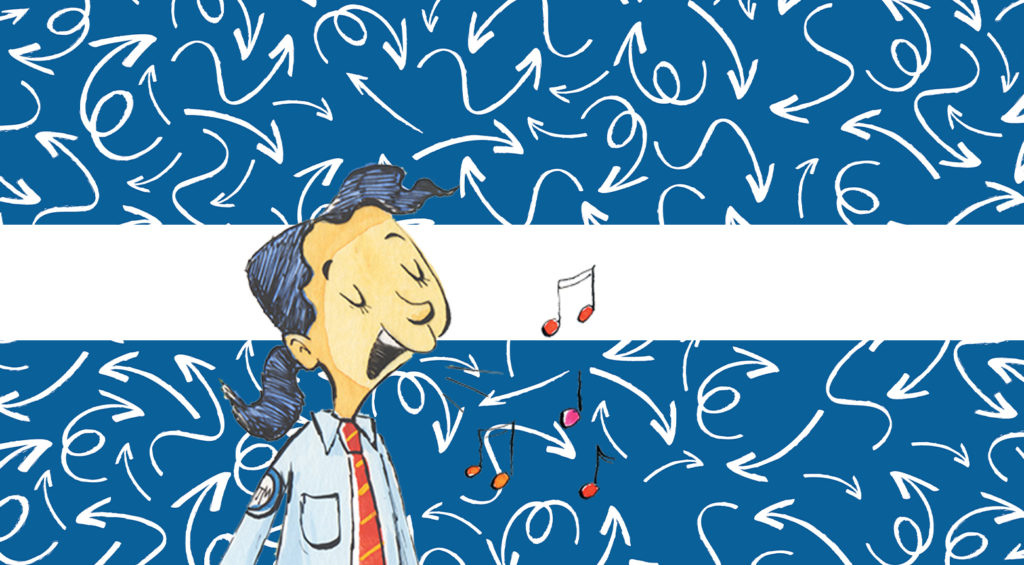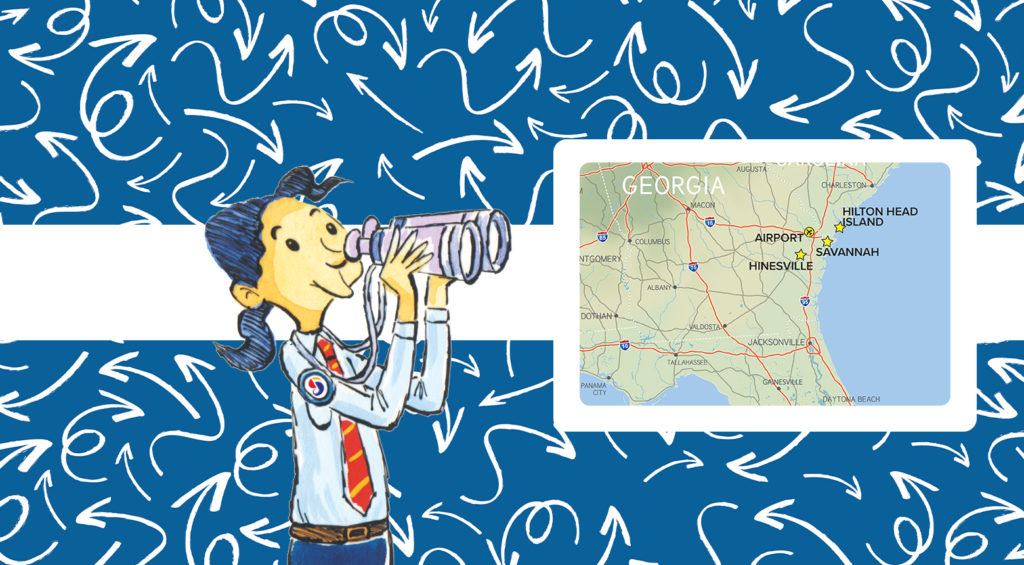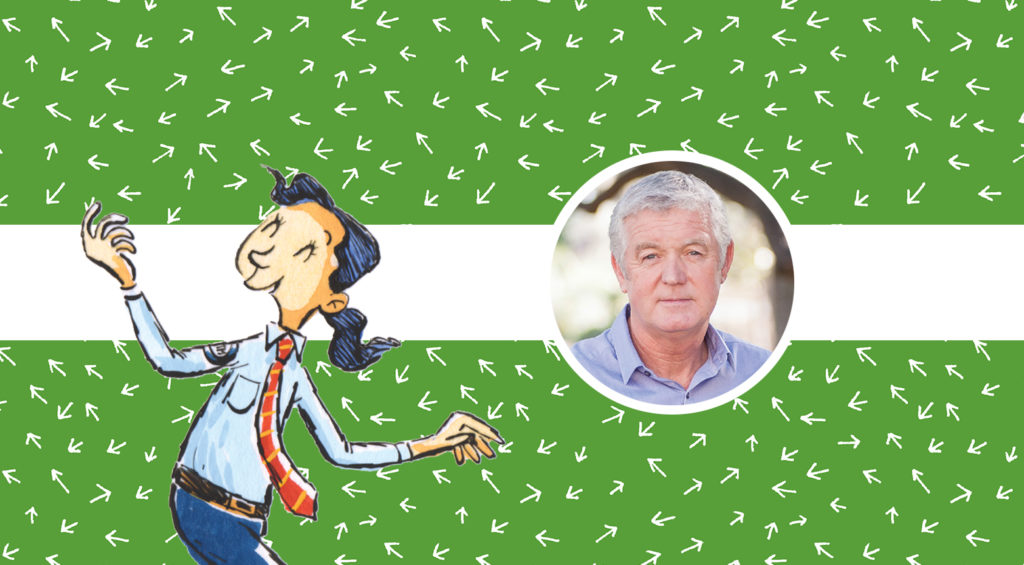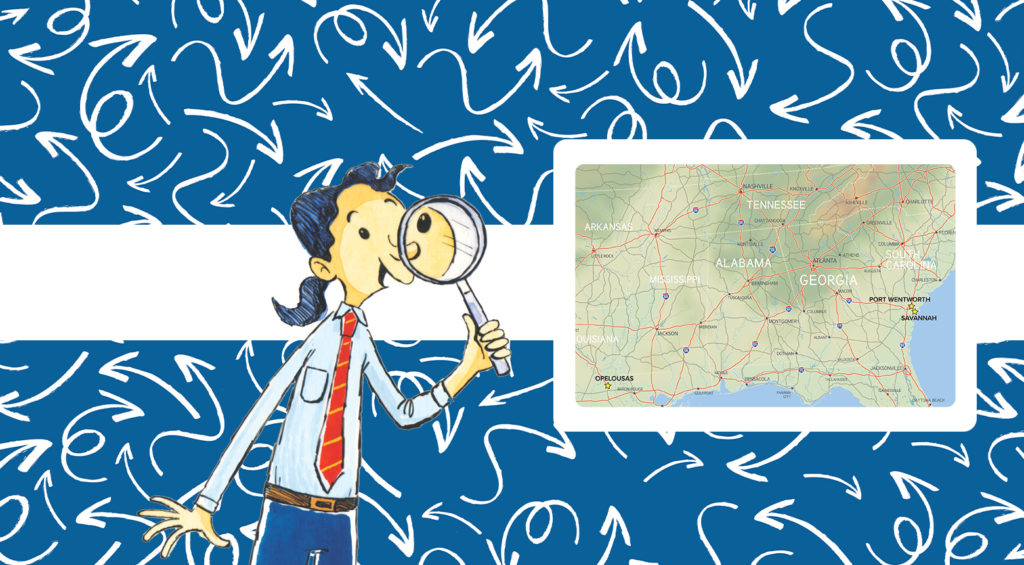Welcome to Musical Explorers! Musical Explorers is designed to connect students in grades K–2 to the musical community of the Georgia and South Carolina Lowcountry as they build fundamental music skills through listening, singing, and moving to songs from a wide variety of musical styles. In the coming year, you and your students will meet…
Category Archives: 2018-19 Curriculum
How to Use This Guide
This Teacher Guide (TG) contains six units, each devoted to one of our Musical Explorers genres. Every unit contains two lessons, each focusing on a song; the lessons guide you through the process of learning the songs, as well as teaching relevant musical concepts and exploring the cultural context of each genre. There are multiple…
Vocal and Body Warm-Ups
Start each lesson with warm-up activities in order to establish a routine that fosters healthy vocal technique, kinesthetic learning, and active listening. The following warm-ups are designed to work as a sequence but can also be used as stand-alone activities, depending on time, objective, and teacher preference. Finding Your Breath Smooth and Bouncy Breath: Breathing…
Becoming Musical Explorers
In this introductory unit, you will find activities and warm-ups you can use throughout the year. Start by introducing Melody and our musical region on SG1. Where is our school on this map? As we explore this region, what kinds of music do you think we might find? On SG2–3, you will find two activities…
Unit 1: Soul Music with Laiken
Melody will take us on a journey to Hilton Head Island, South Carolina to meet our first singer, Laiken. Use SG6–8 to meet Laiken and prepare students to learn about soul music. Genre Overview Soul music derives from Rhythm and Blues (R&B), a form of African-American popular music that arose during the 1940s. R&B and…
Lesson 1: Learning “I Feel Good”
Aim: How can we explore steady beat and rhythm with “I Got You (I Feel Good)?” Summary: Students learn to sing and move along to “I Got You (I Feel Good)” while building vocabulary to describe musical opposites and differences. Materials: Musical Explorers CD or online audio, rhythm sticks (optional) Standards: GA: ESGMK-2.CR.1; ESGMK-2.CR.2; ESGMK-1.CR.3;…
Lesson 2: Exploring “I Heard It Through the Grapevine”
Aim: How can we explore backbeat by moving to “I Heard It Through the Grapevine?” Summary: Students learn to sing and move along to “I Heard It Through the Grapevine” while building vocabulary to describe musical opposites and differences. Materials: Music Explorers CD or online audio Standards: GA: ESGMK-2.PR.3; ESGMK-2.RE.1; ESGMK-2.RE.2; ESGMK-2.RE.3; ESGMK-2.CN.1; ESGMK-2.CN.2 SC:…
Soul Music Unit Music Assessment
Seat the Beat (Rhythm) Materials Needed 4 chairs Instructions 1. Place four chairs in the front of the room. Explain that each chair represents one beat in a 4/4 measure of music. 2. The teacher will call upon a student to choose a chair and decide which note value they would like to represent: a…
Unit 2: Country Music with Anders
Melody will take us on a journey from Hilton Head Island, South Carolina to Hinesville, Georgia to meet our next singer, Anders. Use SG13–15 to meet Anders and prepare your students to learn about country music. Genre Overview Country music originated in the southern United States in the 1920s. It has its roots in blues…
Lesson 1: Learning “Waiting for a Train”
Aim: How can we distinguish chest voice and head voice in yodeling as an important element of country music? Summary: Students sing “Waiting for a Train” and explore vocal registers (chest voice/head voice). Students identify and create their own rhyming lyrics. Materials: Musical Explorers CD or online audio Standards: GA: ESGMK-2.CR.2; ESGMK-1.CR3; ESGMK-2.PR.1, ESGMK-2.RE.1; ESGMK-2.CN.1…
Lesson 2: Exploring “Five Feet High and Rising”
Aim: How do the musical elements of modulation, verse, and lyrics tell a story in “Five Feet High and Rising?” Summary: Students recognize modulation between verses and how it is used to visualize lyrics in “Five Feet High and Rising.” Materials: Musical Explorers CD or online audio Standards: GA: ESGMK-2.CR.2; ESGMK-2.PR.3; ESGMK-2.RE.1; ESGMK-2.RE.3; ESGMK-2.CN.1; ESGMK-2.CN.2…
Country Music Unit Music Assessment
Improvising with Our Voices Materials Needed None Instructions 1. Encourage students to “put on their singing voices” and have sung conversations, promoting the idea of musical questions and answers. 2. Sing an initial question, prompting students to take turns singing an answer. Suggested themes: Conversational themes with questions and answers (from speaking to singing) Creating…
Unit 3: Music of Mali with Yacouba
Melody will take us on a journey from Hinesville, Georgia to the Savannah Airport to meet our next singer, Yacouba, who is travelling from his home in Manhattan, New York. Use SG18–20 to meet Yacouba and prepare your students to learn about the Music of Mali. Genre Overview For centuries, jelis—also called griots in French—have…
Lesson 1: Learning “Kelefaba”
Aim: How does an instrument accompany a melody? Summary: Students will sing “Kelefaba,” and learn how a simple, two-note pattern on the kora provides the foundation for the song. Materials: Musical Explorers CD or online audio Standards: GA: ESGMK-2.CR.1; ESGMK-2.RE.1; ESGMK-2.RE.2; ESGMK-2.CN.2 SC: MGK-2.2, MGK-2.3, MGK-2.5, MGK-2.6 Vocabulary: accompaniment, jeli, kora, melody “Kelefaba” is…
Lesson 2: Learning “Wawanko”
Aim: How are movements used to express the message of the lyrics in “Wawanko”? Summary: Students will learn to sing in call and response and create their own movements. Materials: Musical Explorers digital resources, Musical Explorers Student Guide Standards: GA: SC: MGK-2.1, MGK-2.2, MGK-2.3, MGK-2.5, MGK-2.6 Vocabulary: call and response, improvise Sing “Wawanko” Listen…
Mali Music Unit Music Assessment
Telling a Story with Music (Pitch, Form) Materials Needed White board, markers, “Goldilocks and the Three Bears” story, Orff instruments Instructions 1. Discuss family with students. Who are the members of your family? How are you alike? How are you different? 2. Read “Goldilocks and the Three Bears,” a story about another family. How are…
Concert Preparation: First Semester
Before the Concert Review the artists and music that the students encountered during the fall semester. Look at SG23 and have students find the artists and genres represented on the map. What do you remember about the artists and their music? Listen to a brief excerpt by each of the artists on the Musical Explorers…
Unit 4: Musical Theater with J.J.
Melody now takes us on a journey from the Trustees Theater to Port Wentworth, Georgia to meet our next singer, J.J. Use SG27 – 33 to meet J.J. and prepare your students to learn about Musical Theater. Genre Overview The songs in this unit are part of the larger performing arts genre of Musical Theater….
Lesson 1: Learning “Do-Re-Mi”
Aim: How can we explore a musical scale while learning about musical theater? Summary: Students learn to identify and sing the scale in “Do-Re-Mi” while understanding the genre of musical theater. Materials: Musical Explorers CD or online audio, scissors Standards: GA: ESGMK-2.CR.1; ESGMK-2.CR.2; ESGMK-2.CR.3; ESGMK-2.PR.1; ESGMK-2.PR.3; ESGMK-2.RE.1; ESGMK-2.RE.3; ESGMK-2.CN.1 SC: MGK-2.1, MGK-2.3, MGK-2.4, MGK-2.5, MGK-2.6…
Lesson 2: Learning “Somewhere”
Aim: How can we explore our emotions through musical expression? Summary: Students learn to sing “Somewhere” expressively while understanding how music can convey their feelings. Materials: Musical Explorers CD or online audio, scissors, markers or crayons, popsicle sticks (optional) Time Required: 30 minutes (three 10-minute activities) Standards: GA: ESGMK-2.CR.3; ESGMK-2.PR.1; ESGMK-2.RE.1; ESGMK-2.RE.2; ESGMK-2.CN.1; ESGMK-2.CN.2 SC:…
Musical Theater Unit Music Assessment:
Moving Melodies (Pitch) Materials Needed Various song recordings, paper, writing/coloring utensils, rhythm sticks Instructions 1. Practice singing high and low pitches through call and response. 2. Practice tracing the shapes of the melodies with your finger in the air and/or rhythm stick. 3. Drawing the examples below on a board, have students trace each melodic…
Unit 5: Music of Ireland with Harry
Melody now takes us on a journey from Port Wentworth, Georgia to Savannah, Georgia to meet our next singer, Harry. Use SG34–36 to meet Harry and prepare your students to learn about the music of Ireland. Genre Overview Traditional Irish music comes in many shapes and forms. The most well-known forms of Irish music can…
Lesson 1: Learning “O’ro the Rattlin’ Bog”
Aim: How can we explore fast and slow tempos in “O’ro the Rattlin’ Bog?” Summary: Students learn to sing and move along to “O’ro the Rattlin’ Bog” while building vocabulary to describe musical opposites. Materials: Musical Explorers CD or online audio, markers or crayons Standards: GA: ESGMK-2.CR.1; ESGMK-2.PR.1; ESGMK-2.PR.2; ESGMK-2.RE.1; ESGMK-2.RE.2; ESGMK-2.RE.3; ESGMK-2.CN.1; ESGMK-2.CN.2 SC:…
Lesson 2: Exploring “I’ll Tell Me Ma”
Aim: How can we recognize verse and chorus in “I’ll Tell Me Ma?” Summary: Students learn to sing and dance to “I’ll Tell Me Ma” while using contrasting movements for the verses and chorus. Materials: Musical Explorers CD or online audio Standards: GA: ESGMK-2.CR.3; ESGMK-2.PR.1; ESGMK-2.PR.3; ESGMK-2.RE.1; ESGMK-2.RE.2; ESGMK-2.RE.3; ESGMK-2.CN.1; ESGMK-2.CN.2 SC: MGK-2.1, MGK-2.4, MGK-2.5, MGK-2.6…
Irish Music Unit Music Assessment
Feeling the Tempo (Tempo) Materials Needed Various audio recordings Instructions 1. Review the definitions of allegro (fast) and adagio (slow). 2. Repeat the word “allegro” very quickly with the students. 3. Repeat the word “adagio” very slowly (e.g. “ah-daah-joe, ah-daah-joe”) with students. 4. Have students create one or two expressive movements to demonstrate allegro and…
Unit 6: Zydeco Music with Jeffery
Melody will now take us to Opelousas, Louisiana to meet our final artist, Jeffery. Use SG 40–42 to meet Jeffery and prepare your students to learn about zydeco. Genre Overview Zydeco is music that comes from the rural Creole people of southwest Louisiana. The Creole people are descendants of the Native Americans who originally lived…
Lesson 1: Exploring “Hard to Stop”
Aim: How can we explore tempo with the song “Hard to Stop?” Summary: Students learn to sing and move along to “Hard to Stop” while building vocabulary to describe musical opposites. Materials: Musical Explorers CD or online audio, markers or crayons Time Required: 40 minutes (four 10-minute activities) Standards: GA: ESGMK-2.PR.1; ESGMK-2.PR.2; ESGMK-2.RE.1; ESGMK-2.RE.2; ESGMK-2.RE.3;…
Lesson 2: Learning “Allons a Lafayette”
Aim: How can we explore rhythmic patterns with the song “Allons a Lafayette?” Summary: Students learn to sing and move along to “Allons a Lafayette” while building vocabulary to describe rhythmic patterns. Materials: Musical Explorers CD or online audio, markers or crayons, yarn, scissors, cardstock, hole puncher Time Required: 40 minutes (two 10-minute activities and…
Zydeco Music Unit Music Assessment
Identify the Instrument (Timbre) Materials Needed Percussion family sound examples, available at savannahmusicfestival.org/musicalexplorers Instructions 1. Review the percussion family on SG45. 2. Show students a picture of a triangle. 3. Using sound examples on savannahmusicfestival.org/musicalexplorers, ask students to raise their hands when they hear the instrument. 4. Repeat with frottoir, drums, and cymbal. 5. Next,…
Concert Preparation: Second Semester
Before the Concert Review the artists and music that the students encountered during the spring semester. Look at SG46 and have students find the artists and genres represented on the map. What do you remember about the artists and their music? Listen to a brief excerpt by each of the artists on the Musical Explorers…

